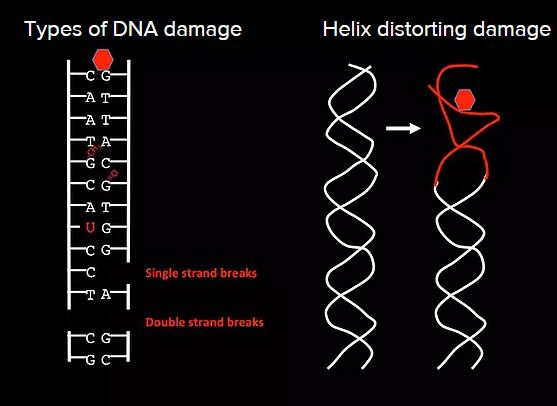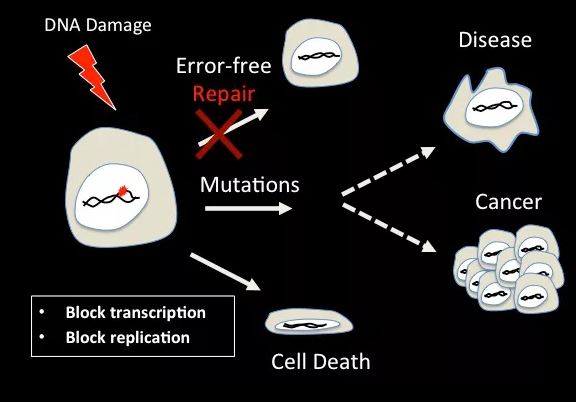The DNA Repair Genomics Lab
What are DNA damages?
The term "DNA damage" refers to any chemical alteration to the DNA structure. This can be breaks in the sugar phosphate backbone (single strand or double strand breaks), or modifications to the bases themselves. We study damages that cause distortion to the helical structure of DNA.

Why do we study DNA damages and DNA repair?
The integrity of the genome is constantly challenged by both internal and external damaging agents. Damages in DNA block transcription and replication, and can lead to cell death. Inaccurate repair of damages results in the formation of mutations, and enhances the risk for genetic disease and cancer development.

Nucleotide excision repair (NER)
In human cells, bulky base damages that distort the DNA helix are removed primarily by nucleotide excision repair. In nucleotide excision repair, the damage is recognized, and repair proteins recruited. These repair proteins include to nucleases, that nick the DNA on both sides of the damage. As a result, a short single stranded DNA oligo (~24-32nt), containing the damage, is released. The single stranded gap in the genome is filled-in by DNA polymerases resulting in error free repair. Damage recognition can occur either directly (general repair) or in a transcription coupled manner. In transcription coupled repair, an elongating RNA polymerase that is blocked by the damage acts to recruit the repair machinery.


